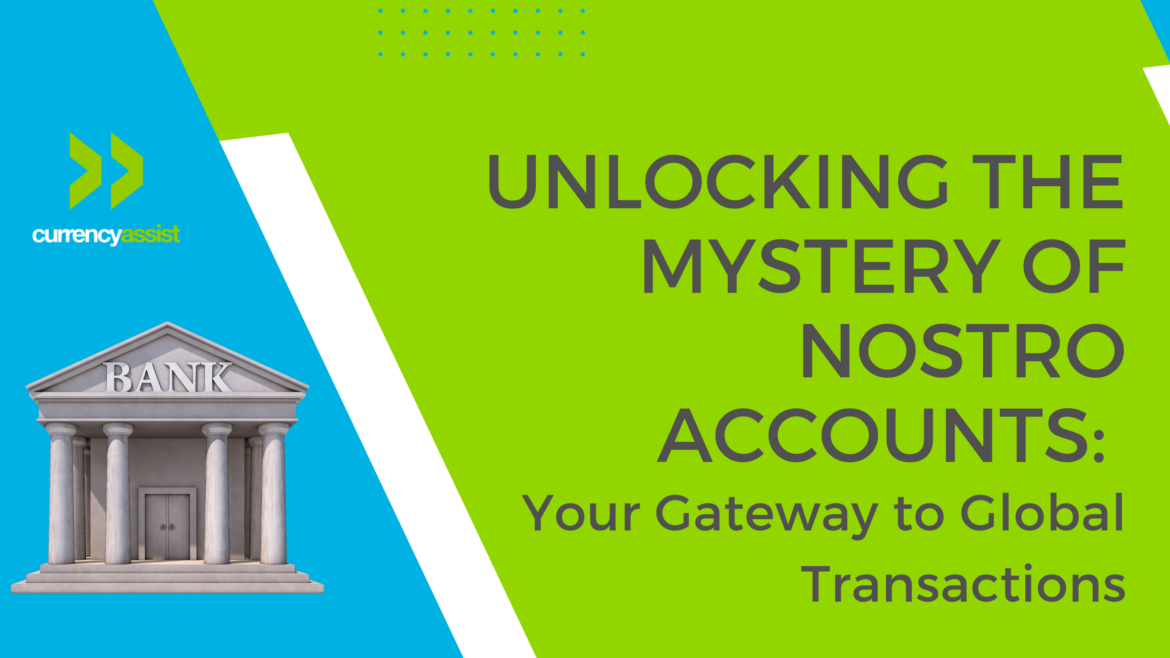In the intricate world of international finance, terms like “Nostro” and “Vostro” accounts might sound like arcane jargon, but they play a crucial role in shaping the smooth flow of global trade and currency exchange. Picture them as the backstage crew ensuring a flawless performance on the grand stage of international finance.
Let’s start with the basics. A Nostro account is essentially a bank account held by a bank in a foreign country, denominated in the local currency. The term “Nostro” derives from the Latin word for “ours,” reflecting the ownership perspective. It acts as a linchpin in the facilitation of foreign exchange and international trade transactions involving foreign currencies. To provide a counterpart, we have the term “Vostro,” Latin for “yours,” denoting accounts foreign banks hold in the domestic currency.
If you’re in the realm of international trade or foreign exchange, the details of your Nostro account become paramount. By holding funds in a foreign currency, you can execute transactions in that currency without the need for automatic conversion to your home currency. This shields you from the volatilities of exchange-rate fluctuations and allows you to leverage better rates on your international money transfers.
Enter the companion player, the Vostro account. This is the mirror image of the Nostro account. While Nostro accounts are typically held by banks and large corporations engaged in international trade, Vostro accounts are held by foreign banks in the domestic currency of the holding bank. Both are instrumental in distinguishing the diverse accounts banks hold for each other.
Banks usually open Nostro accounts in countries with convertible currencies like the US dollar, euro, British pound, and more. If a currency isn’t convertible, a bank might enlist a third party in the foreign country to execute transactions on its behalf. These accounts serve as a record-keeping mechanism for funds held on behalf of other banks.
Let’s demystify the mechanics of Nostro accounts. Assume Bank X in SA wants a Euro account. Instead of trotting off to Europe, Bank X can approach a local SA bank to open a Nostro account with a facilitator bank in the Eurozone, with which it has a banking relationship. The facilitator bank then opens a Euro account, empowering the account holder to engage in transactions using Euro currency.
Before the euro became the primary currency of the European Union, banks needed Nostro accounts in all Eurozone countries. Post-euro adoption, a single Nostro account covering the entire region suffices, streamlining international transactions.
In the realm of international banking, a Nostro account is how Bank A refers to its deposit in Bank B, in the local currency of Bank B’s country. Conversely, from Bank B’s perspective, it’s a Vostro account, denominated in the home currency of Bank B. This intricate dance ensures seamless international transactions.
Yet, like any system, Nostro accounts have limitations. Many developing countries restrict the buying and selling of their currencies, limiting foreign exchange business. In such cases, banks utilise correspondent relationships to make payments in countries where they lack a Nostro account.
While Nostro accounts streamline foreign currency transactions, they come with a price. Banks charge maintenance fees for these accounts, making them more common among businesses and governments than individual account holders.
In conclusion, Nostro accounts may seem complex, but they’re the unsung heroes facilitating the intricate ballet of global finance. Understanding these accounts empowers businesses engaged in international trade and foreign exchange, helping them navigate the complex world of currency transactions with confidence. So, the next time someone mentions Nostro accounts, you can nod knowingly, envisioning the hidden gears that keep the wheels of international finance turning smoothly.

